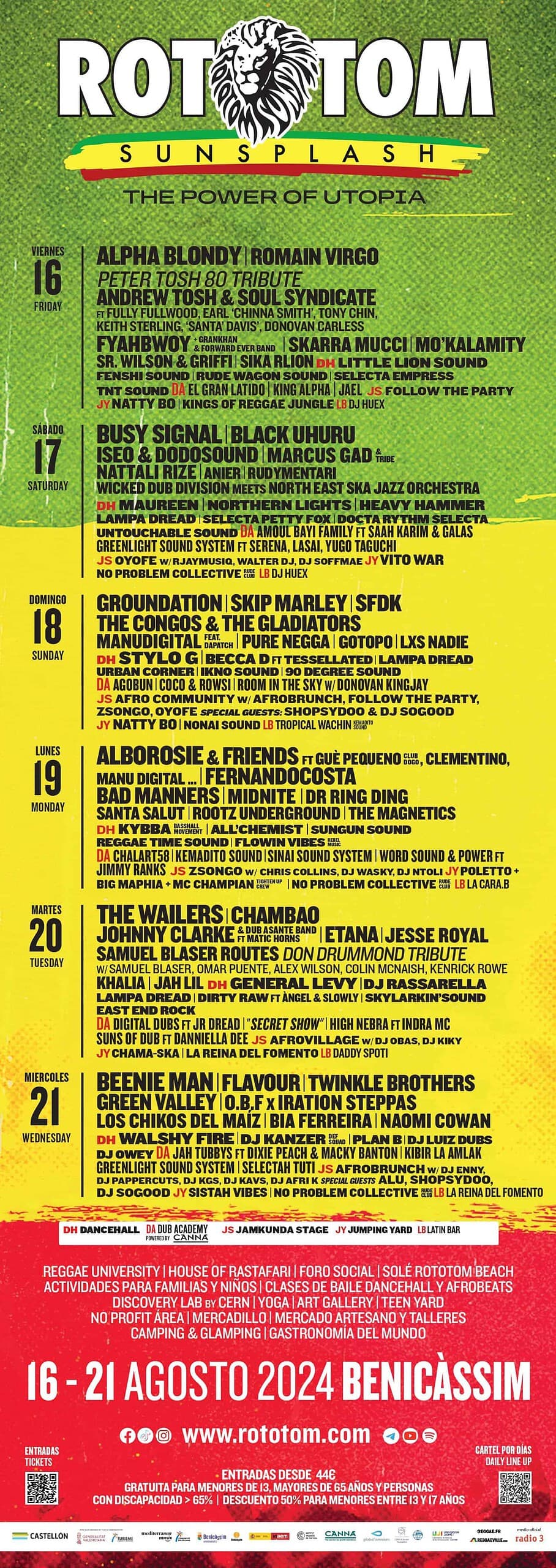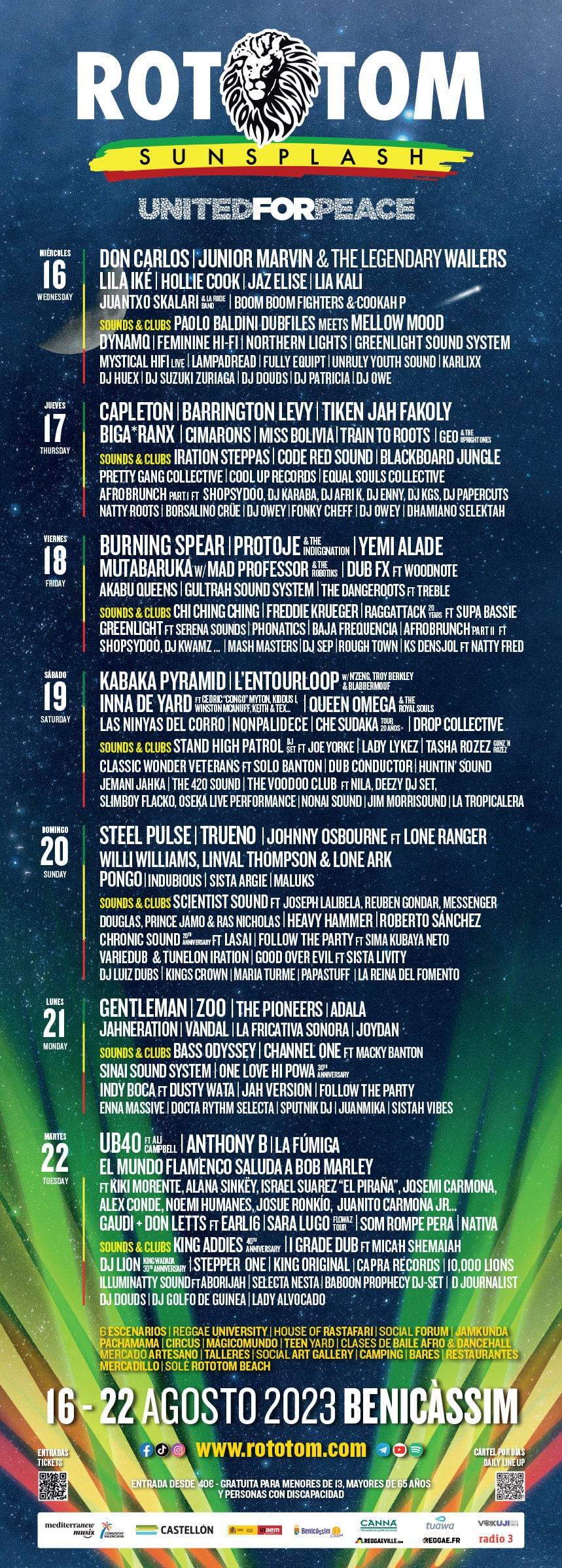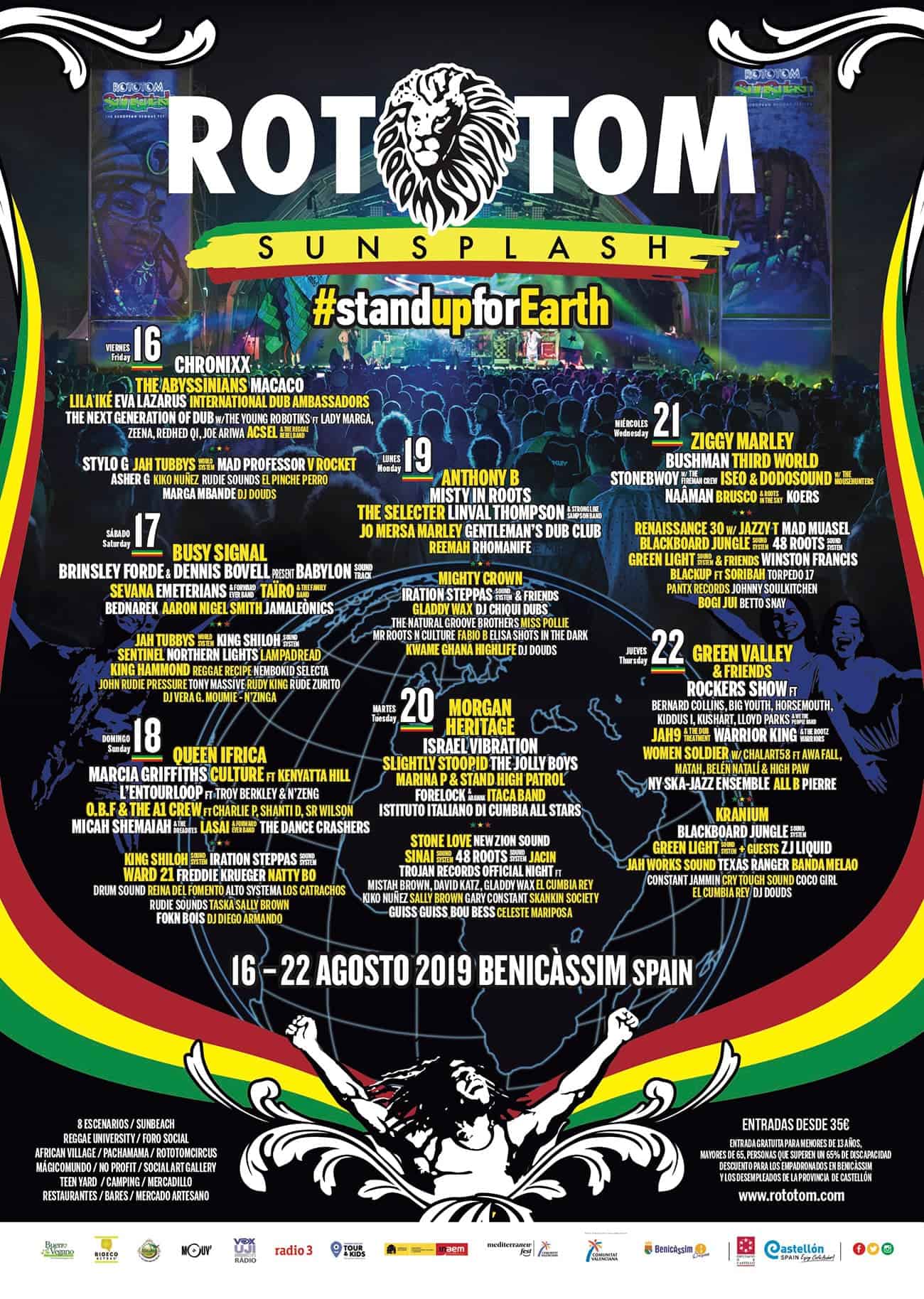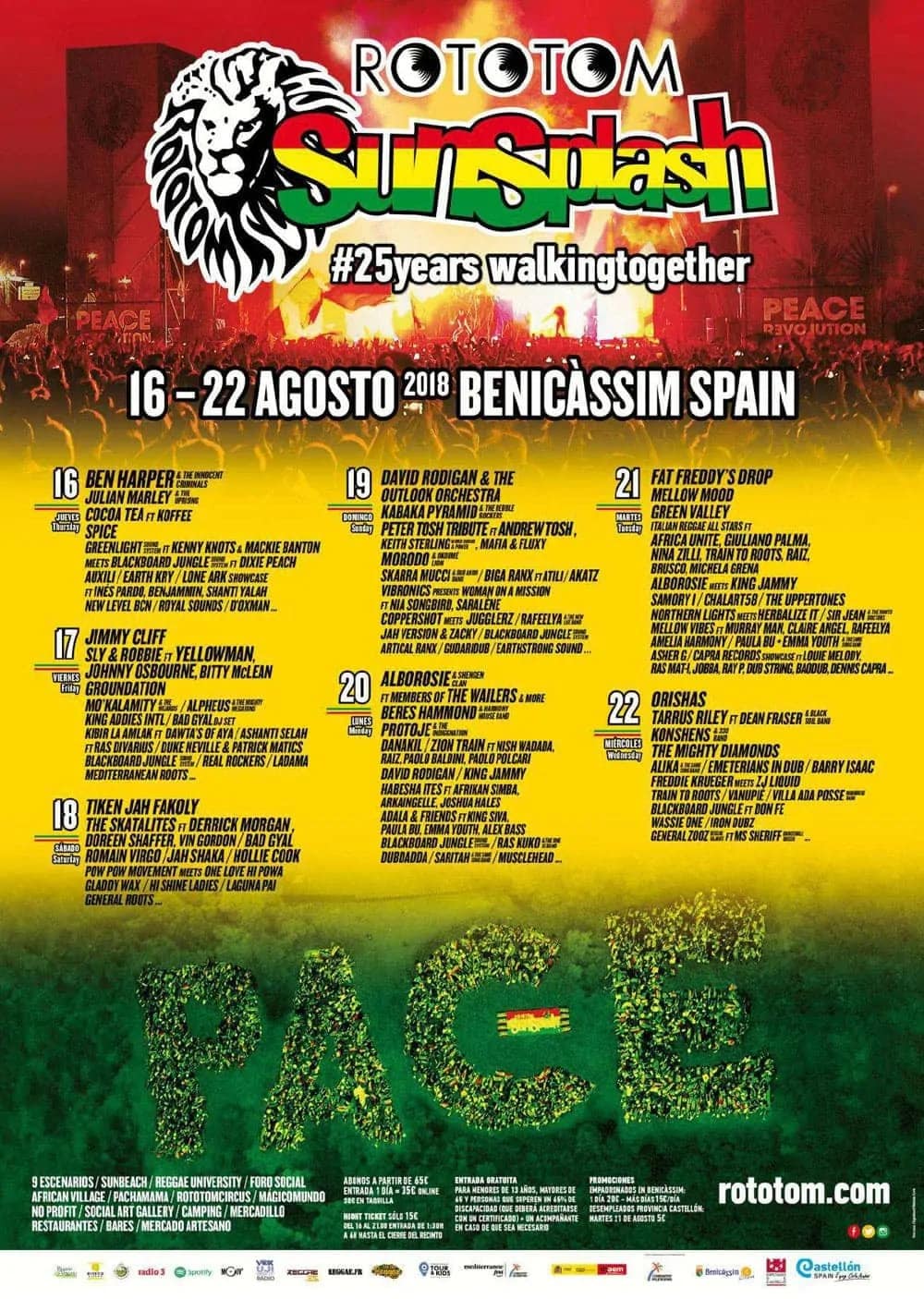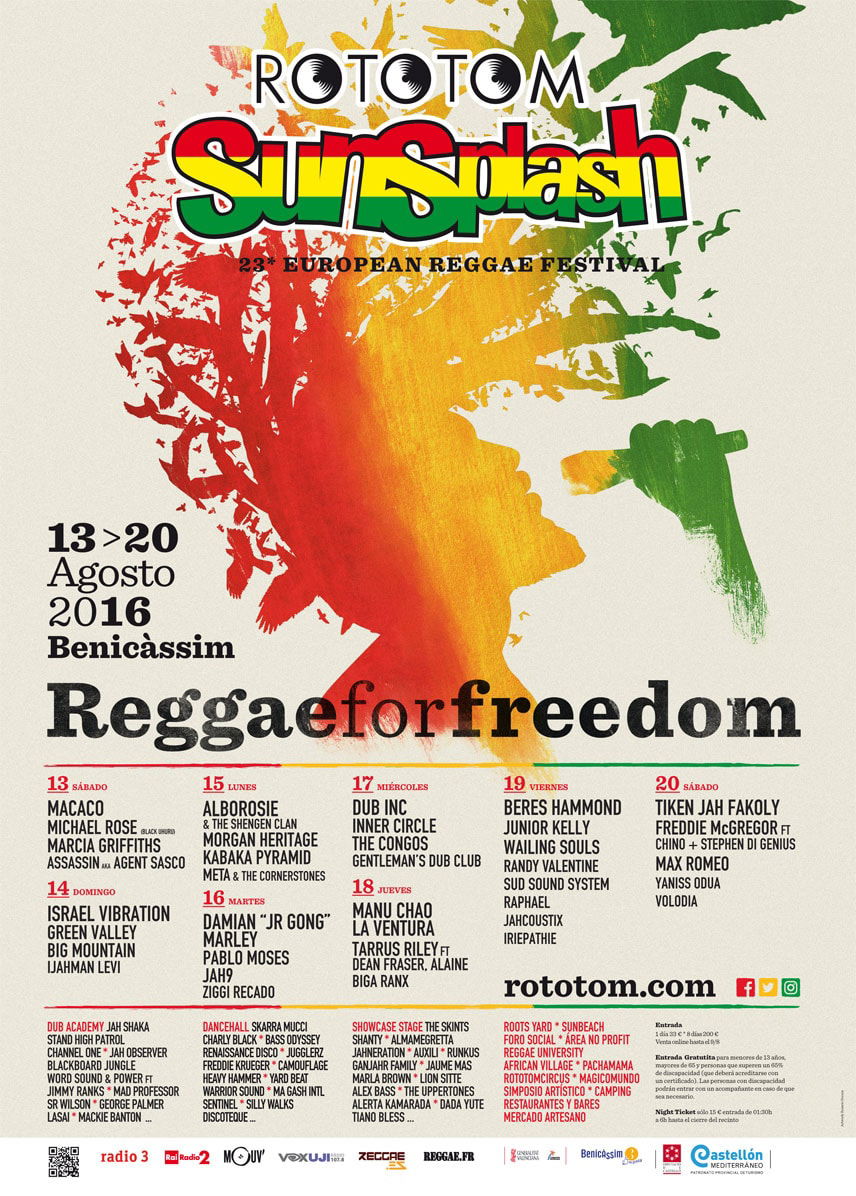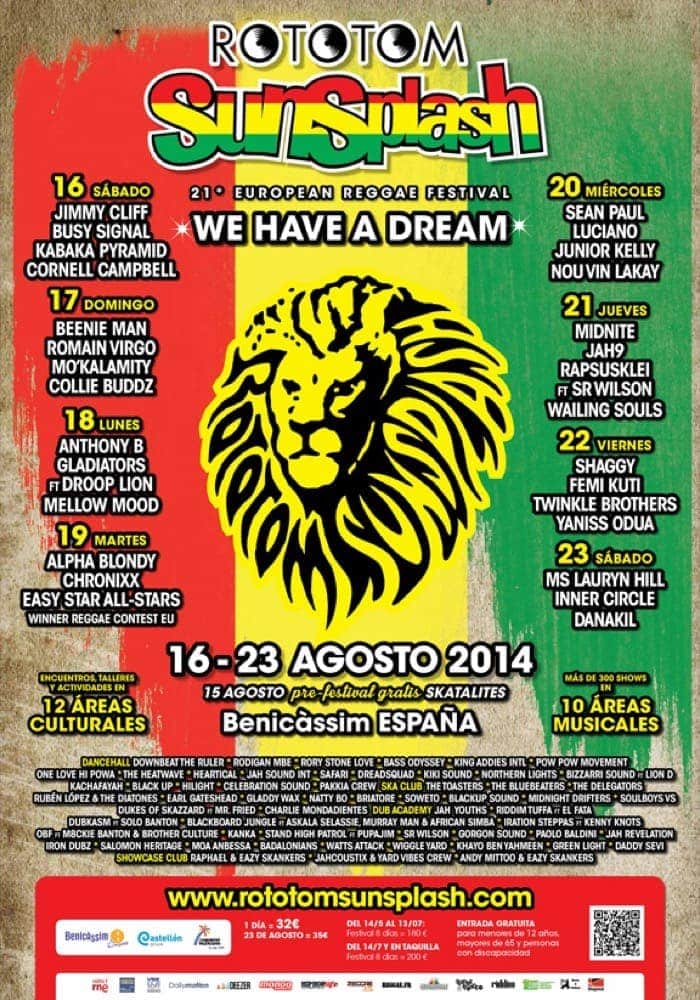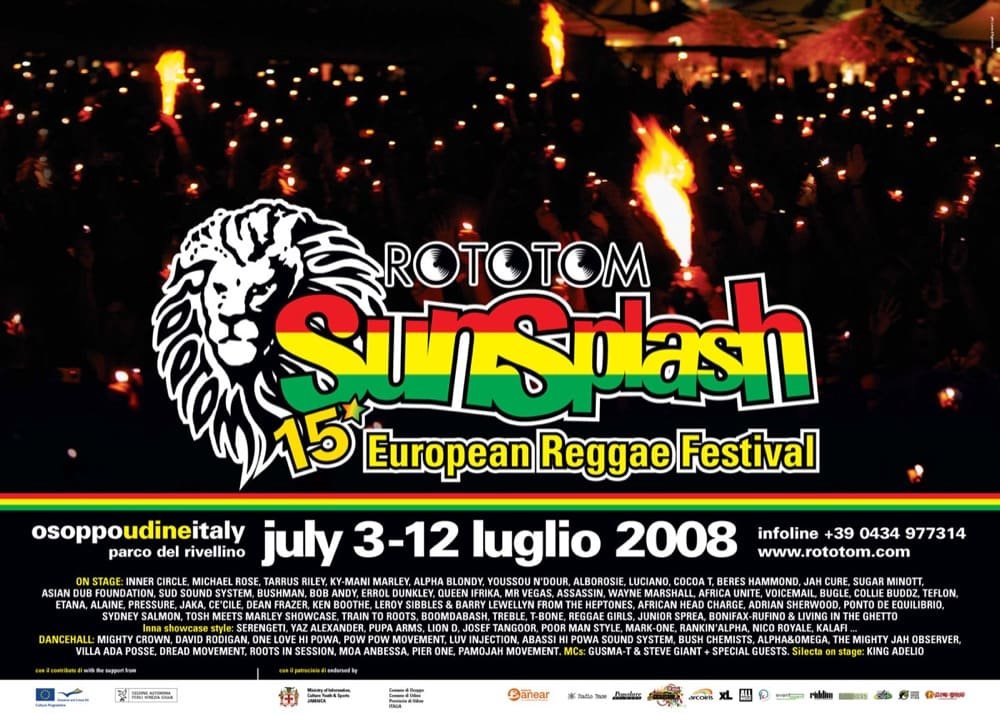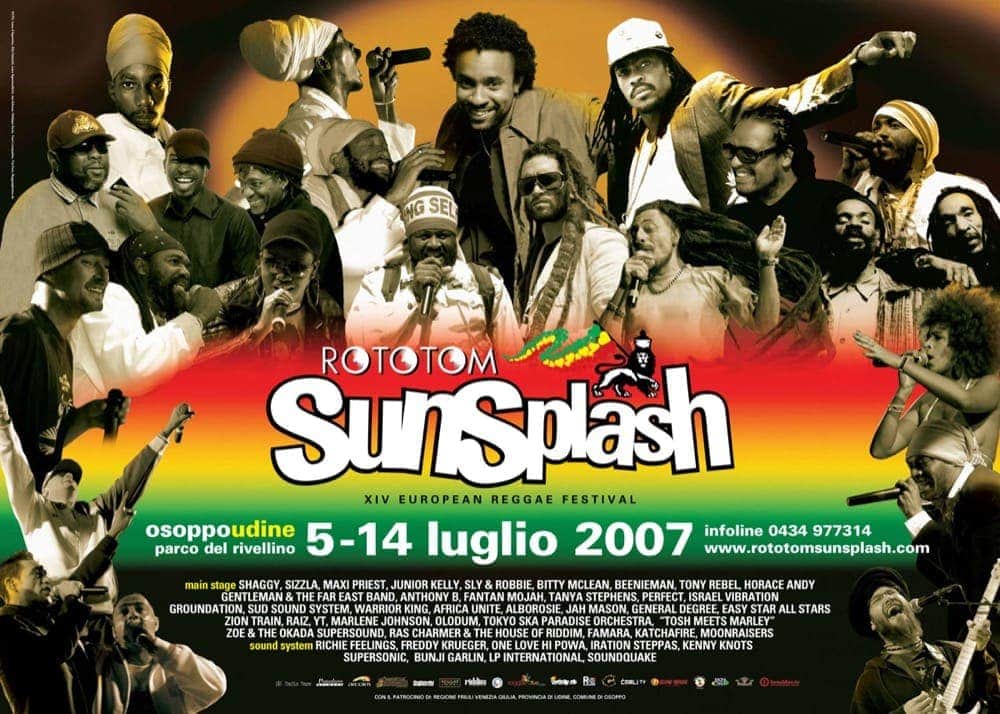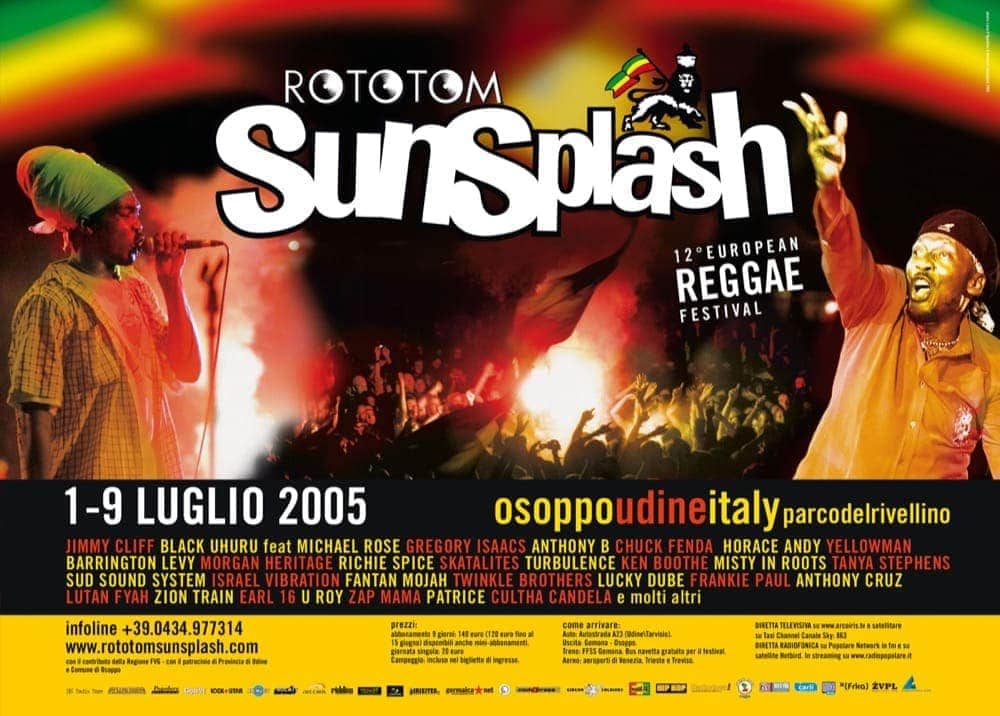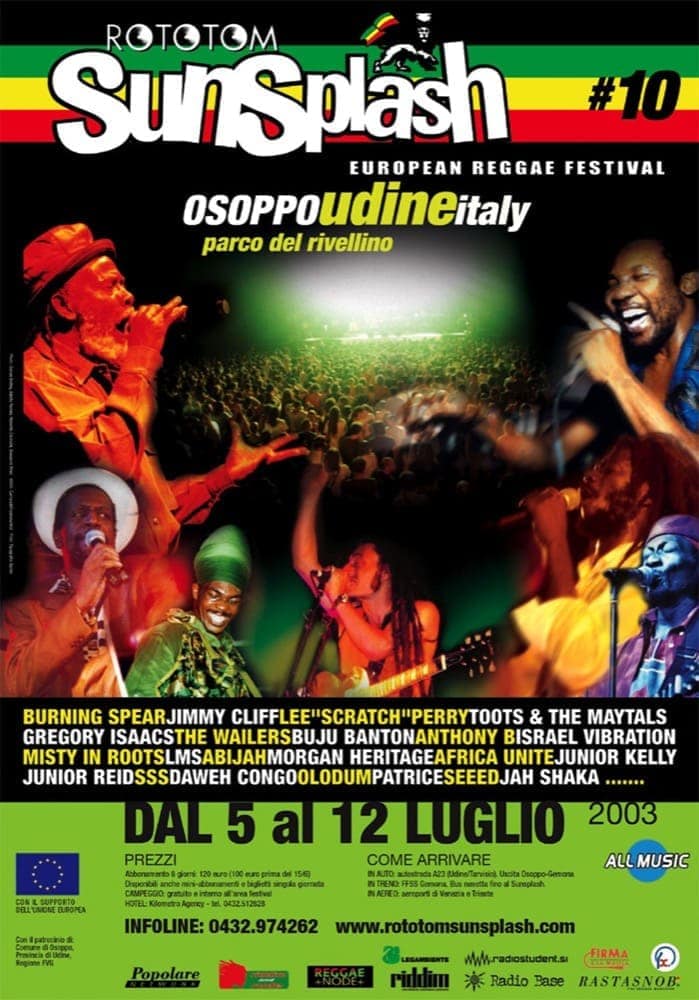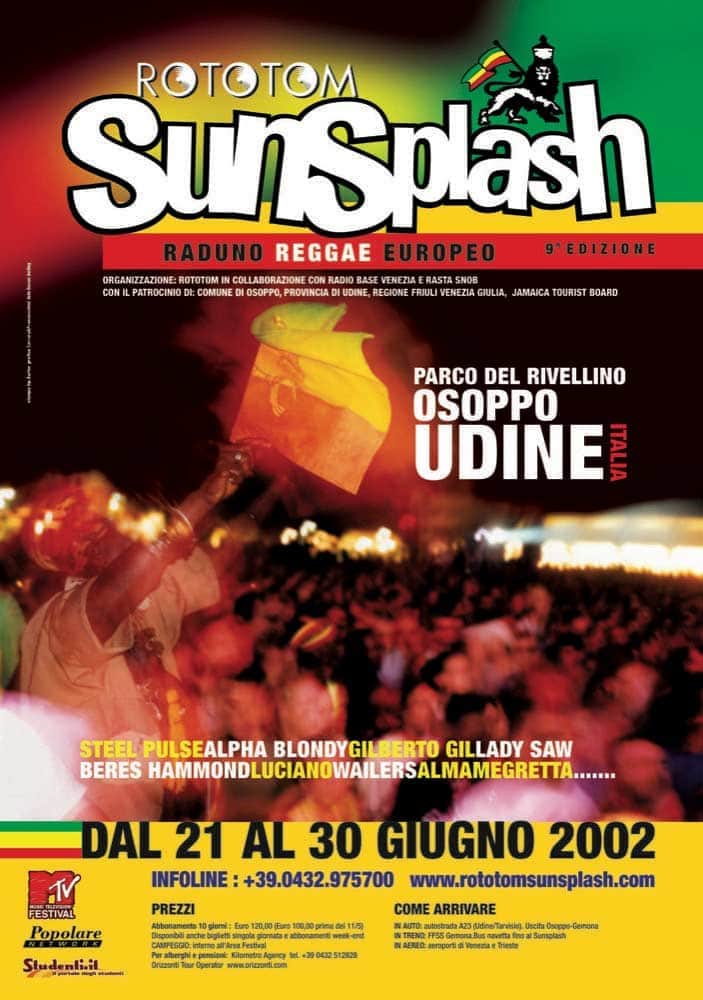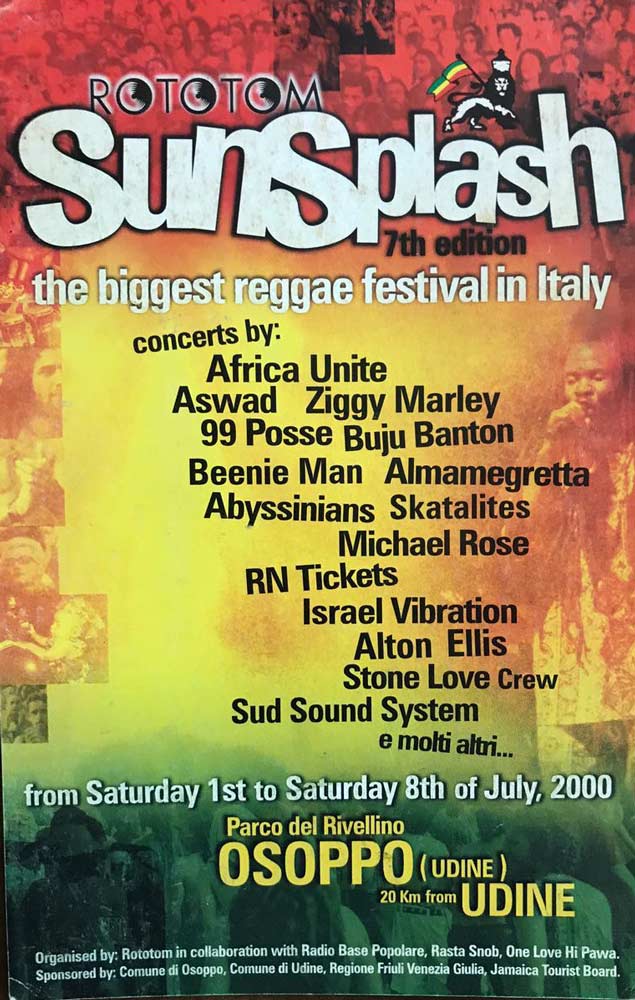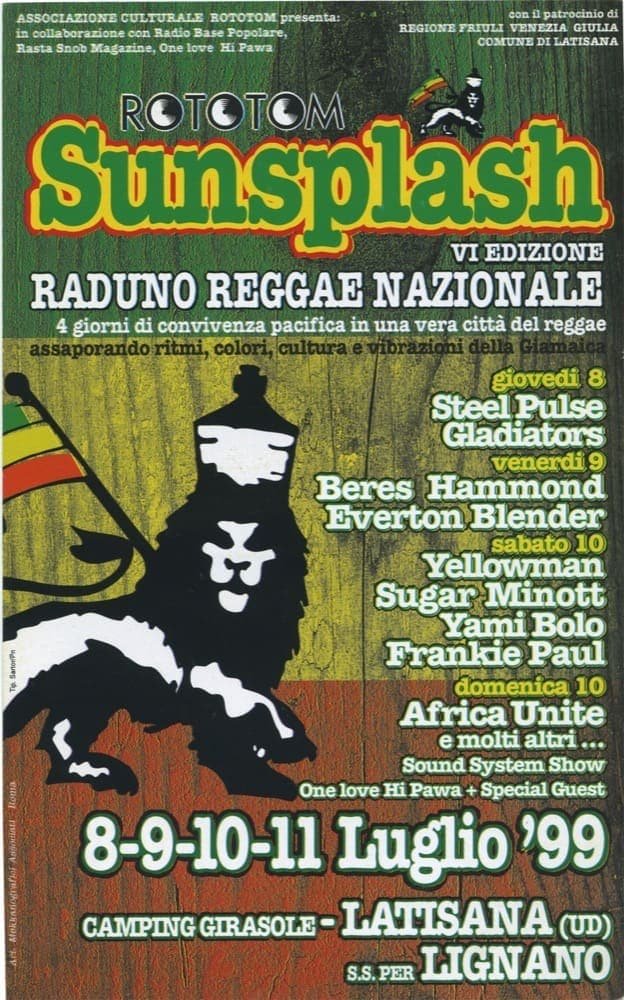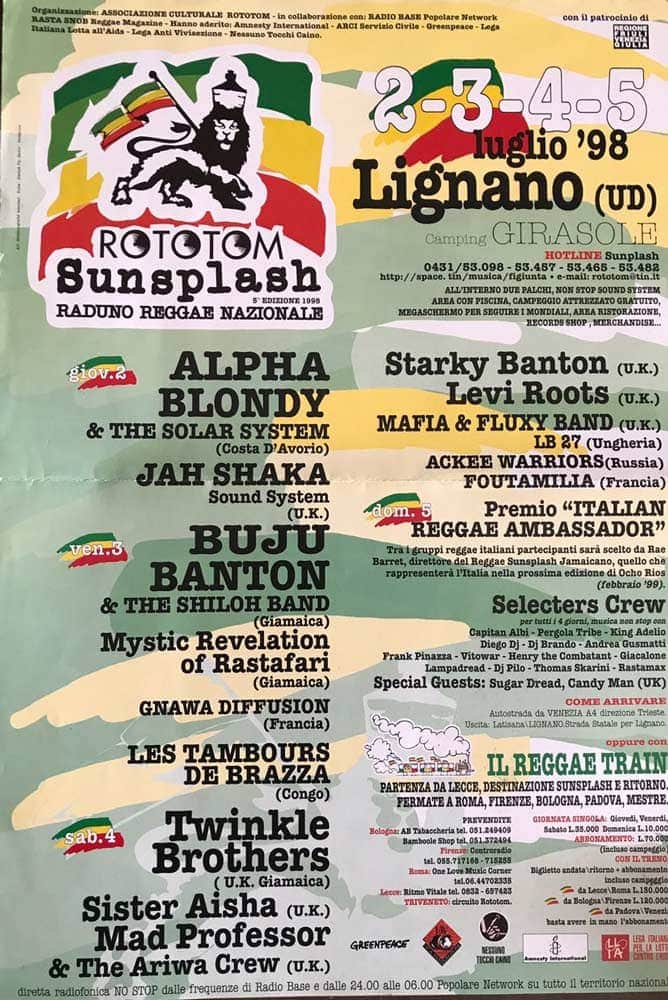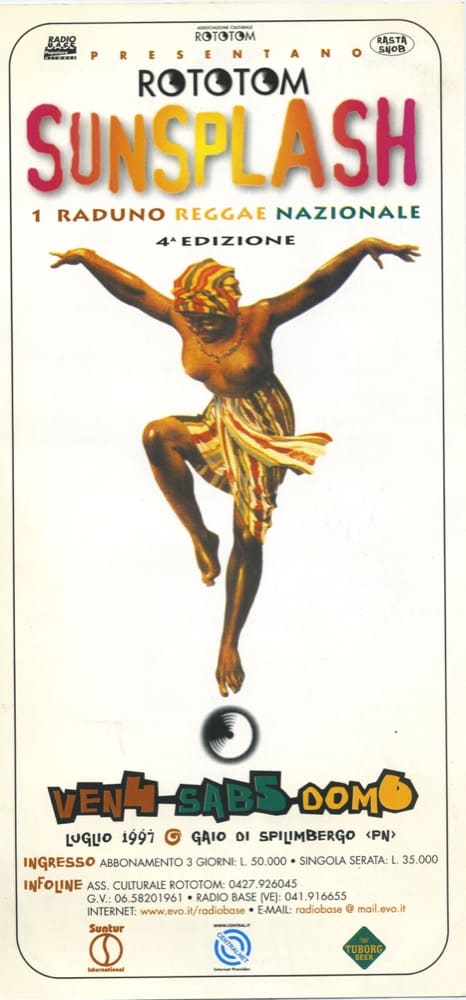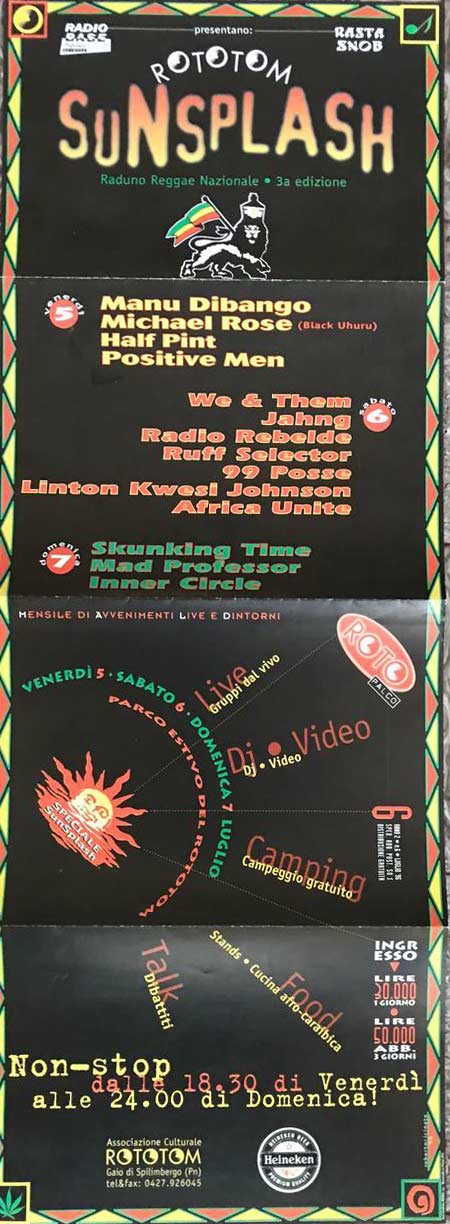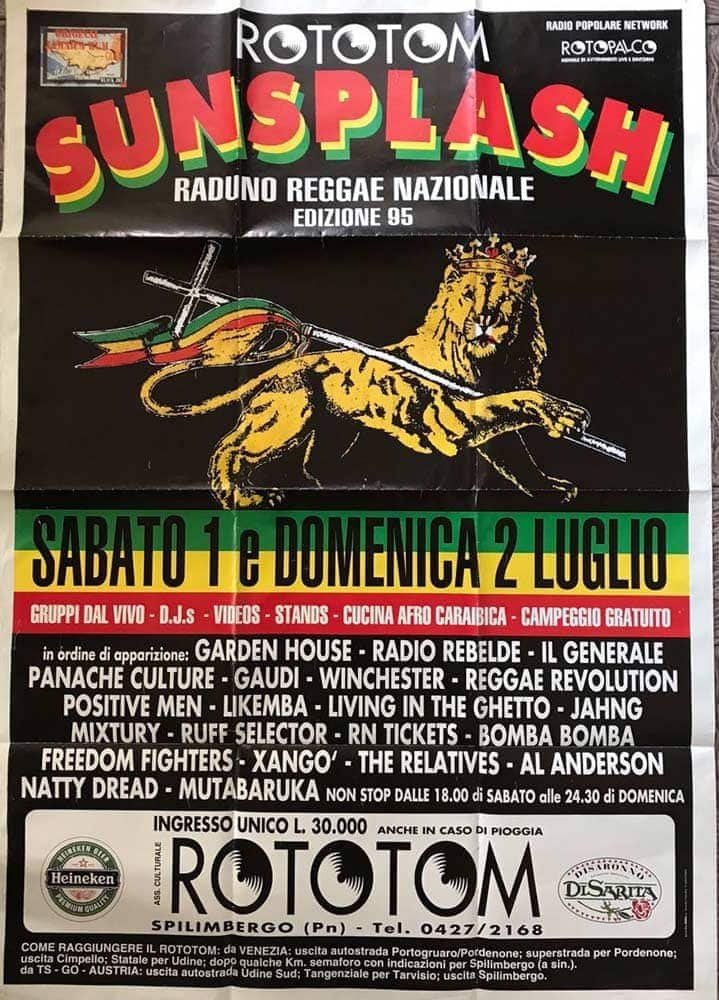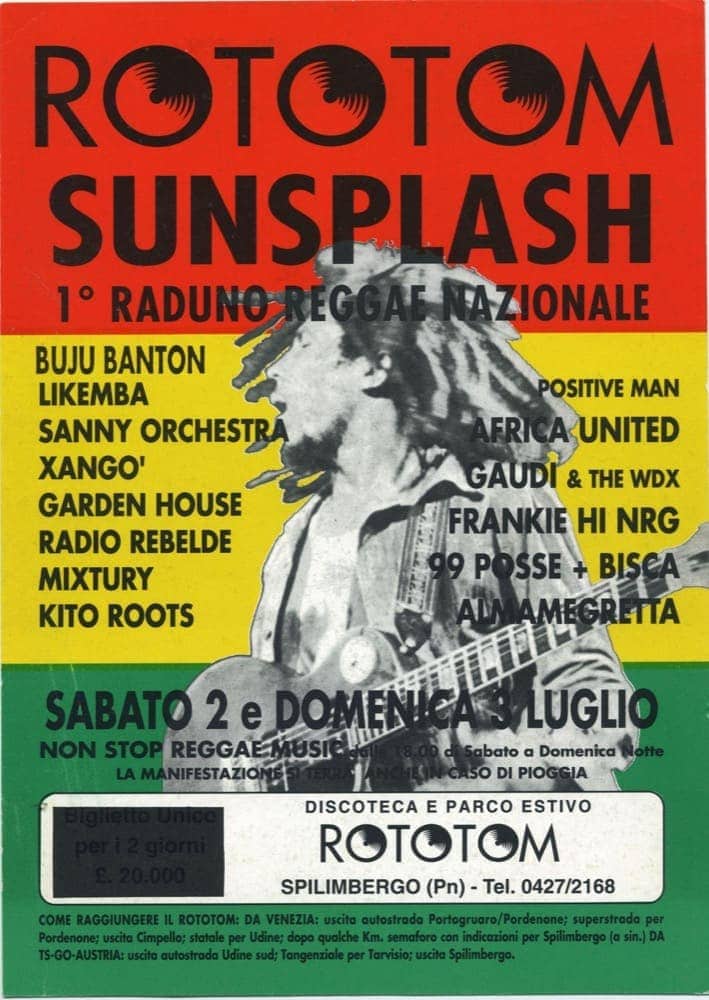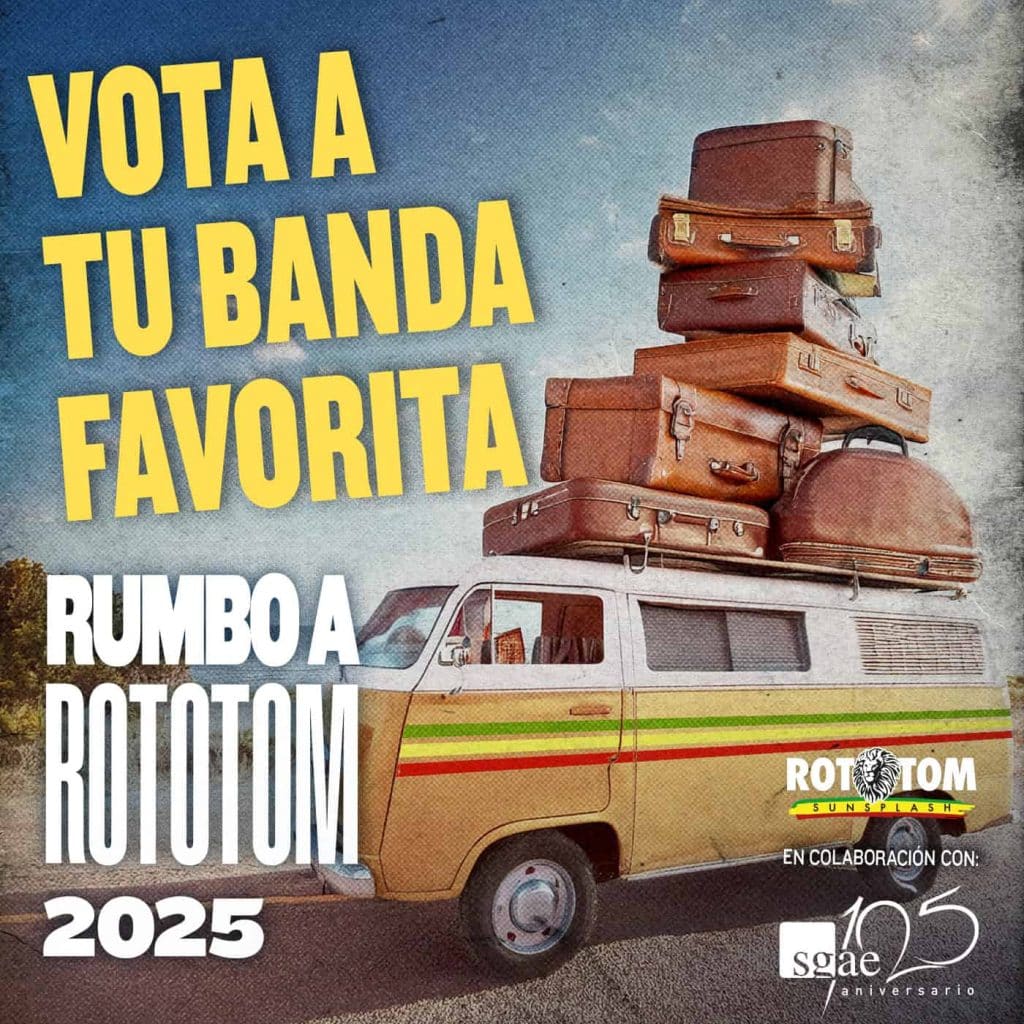In the summer of 2000 the Rototom Sunsplash changed its surrounds once again and moved its headquarters to Osoppo (Udine). If Lignano represented its ‘professionalization’ and consolidation as a cultural and musical landmark event in Italy, Osoppo is crucial to its growth from national meeting to being a European festival. Its proximity to Austria, Slovenia and Germany expanded the boundaries of the event and balanced the handicap of its geographic isolation in a small town of 3,000 inhabitants.
In the 250,000 square meters of the Rivellino Park in Osoppo the festival assumes the dimensions that have accompanied it to the present. It is reconfigured as a holiday destination to spend four to eight days (and subsequently nine and ten days) with a clear differentiation between the festival with ‘day’ activities -the concerts are more spaced out- and night, with all its musical prominence. The camping area becomes a highlight, in the natural park at the foot of the Alps, which favours moments for meeting and socializing among the thousands of festival goers from around the world -150,000 people on average for ten consecutive editions in Osoppo- and helps forge a sense of belonging to the Rototom family. And to create the atmosphere of pacifism, tolerance and multiculturalism that define the event. The number of stages increase (Showcase, Dub Room) and the line-up to continues to add even more of the greats of the reggae scene, with exclusive events in Europe, and the rising stars of the Jamaican genre.
Extra-musical areas take shape, supported by the spaciousness of the space: the Social Forum, dedicated to Talks and debates with sociologists, politicians, religious and intellectuals; African Village and Vivir la Energía -today Pachamama- with capoeira sessions, percussion and African dance courses; spaces for meditation or seminars dedicated to natural medicine and Rasta philosophy; or areas with creative workshops for children. The Reggae University is also gestated, for the exchange of experiences between artists and audience.
Osoppo has also brought with it a change in the organizational structure, with more specialized teams – the Media Office was created – that include European collaborators and an unquestionable international projection linked to the increase in foreign audiences. The website is translated into seven languages (English, Italian, French, Spanish, Portuguese, Slovenian and German) and bus routes are organized between various countries.
The promotion of reggae culture is reflected in initiatives such as the European Reggae Contest aimed at gathering talent emerging bands (2002-2015).
The self-management system of the Rototom Sunsplash project -based on obtaining income solely through ticket sales and the absence of effective sponsors- proves itself in this phase. In 2003, a decade after its launch, the festival zeroed debt. That same year leaves us a concert to remember, for its hypnotism and intensity, in the history of Rototom: that of Burning Spear.
The golden moment of the Rototom Sunsplash for music, public and projection refers to is darkened by the political and judicial persecution that it begins to suffer from the government in the hands of the right. The fusion and coexistence of cultures that the event promoted clashed with the policy of closing borders that formed a part of the nationalist discourse of Silvio Berlusconi and his Northern League partners. The situation became more complicated following the adoption in 2006 of the Fini-Giovanardi law, declared unconstitutional in 2014 and, which, among other things, proposed up ten years in prison for tolerating the use of drugs such as cannabis inside spaces with leisure and cultural activities. The law criminalized the event –of which it was acquitted in 2015- to the point that it was forced to move from Italy to Spain.

